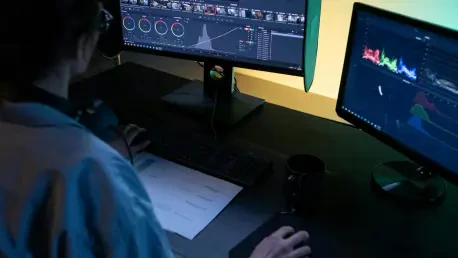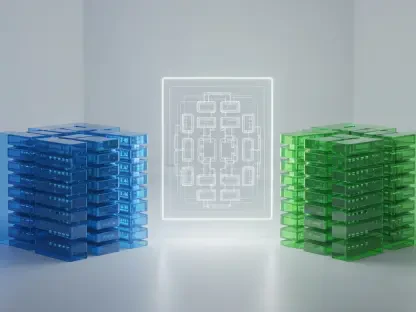Honda Motor Co., Ltd. has made a decisive move to enhance its software development capabilities by opening Honda Software Studio Osaka. Situated in the Grand Green Osaka complex in Osaka, Japan, this new hub is part of Honda’s strategic initiative towards incorporating intelligent technologies into its offerings, particularly focusing on electrification. Honda’s decision to establish this operational center illustrates its dedication to boosting research and development efforts in software. With an investment of approximately 2 trillion yen planned for the decade leading to the fiscal year 2031, this expansion underscores the significance Honda places on acquiring top software talent, boosting associate engagement, and widening development capabilities to keep up with the swiftly evolving automotive sector.
Strategic Expansion and Multi-Base Collaboration
The opening of Honda Software Studio Osaka marks a critical expansion in Honda’s software development endeavors and reflects a broader strategy of scaling up operations across Japan. This initiative is part of Honda’s plan to establish a network of software hubs, which also includes studios in Omiya, Shinagawa, Nagoya, and Fukuoka. Through this strategic placement, Honda aims to leverage regional expertise and foster innovation across its operations. The upcoming establishment of a software development base in Tokyo in early 2026 further reinforces Honda’s intention to distribute its development efforts, enhancing productivity and collaboration across remote teams company-wide. This geographically diverse approach allows Honda to tap into a wide range of skills present in different regions while fostering a unified software development culture.
Collaboration is central to Honda’s strategic vision, emphasizing the benefits of multi-base teamwork in driving forward its software initiatives. In particular, the automobile development operation in Tochigi serves as a focal point, channeling expertise and technological advancements across Honda’s network. By integrating advanced facilities at the newly established Osaka studio, Honda seeks to achieve high levels of productivity and coordination among its various operations. Furthermore, the studio is positioned to become a recruitment magnet for high-caliber software engineers, fostering collaborations with academic institutions and businesses in the Osaka/Kansai region. Such partnerships are expected to infuse fresh value into Honda’s product range and contribute to its influence within the industry.
The Role of Advanced Technology and Diverse Recruitment
Within Honda Software Studio Osaka, multiple development teams are tasked with innovating cutting-edge software for Honda’s software-defined vehicles. These teams focus on enhancements in automated driving, advanced driver assistance systems, smart cabin applications, System on Chip integrations, and sophisticated vehicle operating systems. By concentrating on these areas, Honda aims to elevate vehicle functionality and refine user experiences. Notably, Honda adopts a diverse recruitment strategy to populate its Osaka studio with talent from various backgrounds. This approach not only includes mid-career professionals and system integrators but also engineers from diverse industries such as railroads and electronics. Combining this broad spectrum of experiences with Honda’s existing knowledge base allows for a rich exchange of ideas and technical advancements in the studio environment.
The commitment to diverse recruitment ensures a continuous inflow of fresh perspectives and creative solutions. Honda Software Studio Osaka represents an inclusive, forward-thinking initiative poised to cultivate innovation and drive software advancement. The recruitment strategy highlights Honda’s adaptability and openness to new concepts, vital for navigating the rapidly changing automotive landscape. Accordingly, the studio’s development teams are positioned to harness technological advancements and tailor them to fit Honda’s ambitions of delivering enhanced products to its customers. Through this blend of technological focus and strategic human resources planning, Honda’s Osaka studio emerges as a pivotal force in ensuring the company’s long-term competitiveness and industry leadership.
Innovative Workplace Designs and the Role of “The Three Realities Principle”
A feature that marks Honda Software Studio Osaka is its innovative adoption of Activity-based Working (ABW), a concept that frees employees from traditional fixed workstations. ABW provides flexible work settings tailored to specific task requirements, aiming to boost motivation and performance while encouraging spontaneous communication. The office layout adheres to a communication-first concept, optimizing productivity and fostering new value creation within the operation. This emphasis on flexible and collaborative workspaces reflects Honda’s dedication to an adaptable workflow that enhances communication and collaboration across the company. Such dynamic working conditions make the Osaka studio an innovative hub driven by enhanced communication and an adaptable work ethos.
The design philosophy of Honda Software Studio Osaka is deeply rooted in “The Three Realities Principle,” which stresses the importance of understanding real-world conditions. The studio is equipped with unique facilities such as project booths for discussions, debug rooms for hardware work, and convenient parking for real-world software application testing in completed vehicles. By promoting hands-on engagement and situational understanding, these features intend to speed up software testing and debugging processes, ultimately resulting in higher-quality products. The principle serves as a foundation for the decision-making process within the studio and sets the tone for practical and informed technological development.
Impacts and Future Considerations
Honda’s launch of the Software Studio Osaka signifies a pivotal expansion in its software development strategy, reflecting a larger goal of broadening operations throughout Japan. This initiative is part of Honda’s ambition to create a network of software hubs, featuring facilities in Omiya, Shinagawa, Nagoya, and Fukuoka. By situating these hubs strategically, Honda hopes to harness regional expertise and spur innovation across its divisions. The anticipated software development base in Tokyo, slated for early 2026, underscores Honda’s commitment to spreading its development projects, enhancing teamwork and efficiency among remote teams. This approach lets Honda access diverse skills across regions, fostering a cohesive software culture.
Collaboration is at the heart of Honda’s strategy, highlighting the benefits of teamwork across multiple locations in driving software initiatives. The Tochigi automobile operation acts as a central hub, assembling expertise and innovation within Honda’s network. The cutting-edge facilities in the new Osaka studio aim to boost productivity and synergy company-wide. With the studio poised as a recruitment hub for top-tier software engineers, it will also collaborate with academic and business entities in the Osaka/Kansai region, enriching Honda’s product lineup and strengthening its industry presence.









